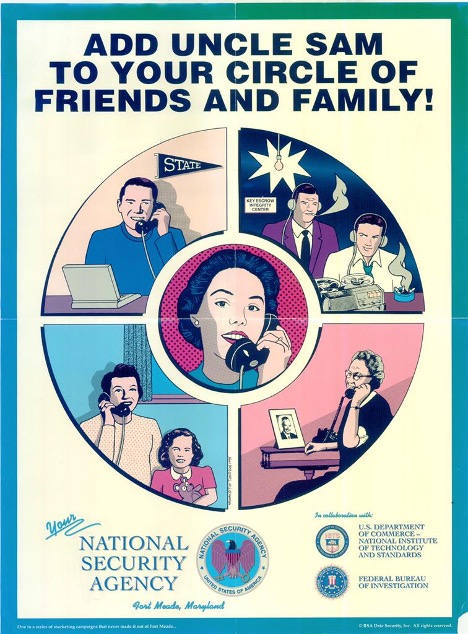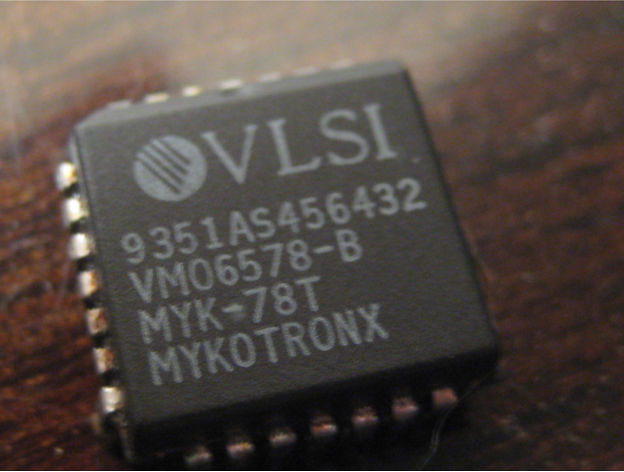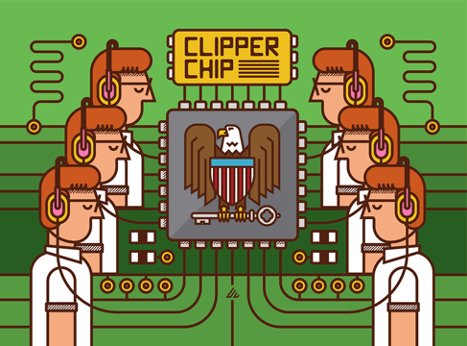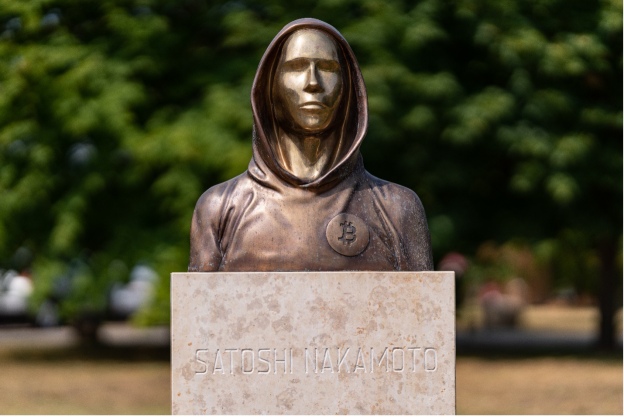 This is John Gilmore, one of the greatest rebels of our time.
This is John Gilmore, one of the greatest rebels of our time.
In the early 1990s, Gilmore started a small discussion group that met at the offices of his company, Cygnus Solutions, in the San Francisco Bay Area. Formally, the topic was digital privacy. Informally, their mission was to defeat the government.
This clandestine gathering of minds, which also included the radical geniuses Eric Hughes and Timothy C. May, saw that the Internet was going to change the world, and that there were two likely outcomes.
In the first scenario, the government would have the ability to spy on anyone, anytime: a kind of Orwellian dystopia where citizens would have zero privacy on the Internet, and free speech would gradually be extinguished.
In the second scenario, citizen privacy would be protected, which would not only allow free speech to thrive, but also allow secure financial transactions over the Internet, which would be good for business and the economy.
Two options: dystopia or utopia. The key to it all was public cryptography.
Cryptography had been around since 3,000 BC: the Spartans, Julius Ceasar, and the Nazis all used it to encrypt military messages. But the watershed moment came in 1976, when this math paper gave the public access to military-grade encryption.
This was the technology – public key cryptography – that Gilmore’s group was so excited about.
The U.S. government did not share their enthusiasm. A military movement began in the halls of Congress to limit the spread of this encryption technology. Which, it turned out, was a little bit like limiting the spread of math.

The Cypherpunk Mailing List
“Privacy matters because privacy is power. We believe people should have the right to decide for themselves what information they share and with whom.” – John Gilmore
Gilmore’s group were radicals. They were also good writers.
They weren’t just discussing abstract technology, they were talking about how to use it to protect civil liberties, to protect citizens from government overreach.
Today, some of their writings seem prophetic. “The technology of the future will require an informed and vigilant population, able to protect itself from a totalitarian state’s abuses,” wrote Eric Hughes. “Cryptography will play a vital role in that process.”
As Gilmore’s group began to grow in size and influence, they began to call themselves “cypherpunks,” a mashup of “cipher” and “cyberpunk.”
To better coordinate their discussions, they started the Cypherpunks mailing list (remember, these were the days before Reddit and X). The mailing list quickly grew, as members discussed everything from government monitoring to corporate control of information.
As Wikipedia points out, the public would not understand these issues for decades. But today, when you look at the massive aggregation of our personal data by Meta, Google, and Apple — and the failure to protect that data by companies like Equifax and Capital One — you have to think, maybe the Cypherpunks were right.
“Hierarchies are inherently insecure. Flat networks based on cryptographic protocols are far more robust.” – Ian Grigg
The thinking of the Cypherpunks was eloquently summarized in A Cypherpunk’s Manifesto, written by Eric Hughes in 1993. “Privacy is not secrecy,” he says. “A private matter is something one doesn’t want the whole world to know, but a secret matter is something one doesn’t want anybody to know.”
In other words, we all want privacy around our medical procedures, our financial statements, and our deepest feelings. These are things we selectively share with those we trust.
Today, we take this online privacy for granted: logging into your hospital’s patient portal, doing your banking online, talking with a therapist over Zoom. But it was all made possible by the cypherpunks.

The Clipper Chip
The U.S. government had different plans.
In 1993, the Bush administration introduced a new computer chip, cheerily named the “Clipper Chip,” which sounds like your best buddy. In reality, though, your buddy was a snitch.
The computer chip would allow strong encryption, with a catch: it would have a “back door” that could be opened by the government, in case your device needed to be searched.
Let’s say you had a new mobile phone encrypted by the Clipper Chip: the government would have a cryptographic key (like a password) that would be held in a secure location, allowing them to listen in if they needed to tap your phone, under court order.
For the Cypherpunks, this was a flashpoint. Who stored the secret key? How could the secret key remain secret? The secret keys would be a honeypot for hackers. It was like having all your passwords stored with one cloud-based company (which, by the way, is a really bad idea).
The Clipper chip was the rallying cry the Cypherpunks needed to turn their message into a movement.

The War on Digital Freedom
The Cypherpunks went on the offensive.
Gilmore, who unofficially became known as “Captain Cypherpunk,” used the mailing list to delegate tasks like technical analysis, legal research, and media outreach among experts. The Cypherpunks framed the government’s efforts as a war on digital freedom.
At the same time, Cypherpunk hackers wrote code to expose the Clipper Chip’s weaknesses. They created a fictional company called “Sundevil Technologies,” so they could secretly order phones with the new chip and hunt down their vulnerabilities, then expose them widely.
Some of their methods were ingenious. They raised $200,000 to build a computer that could crack the government’s DES algorithm. Adam Back and others created a comic book called “Uncle Fido’s Guide to the Clipper Chip” to explain in user-friendly language why it mattered.

One Cypherpunk, Phil Zimmerman, created an email encryption program, available to anyone, that was the equivalent of a 4,096-digit padlock that would take a supercomputer billions of years to unlock. He called it “Pretty Good Privacy.” (Read my story on that one here.)
Slowly, the Cypherpunks even got politicians to join forces. To prevent one pro-Clipper bill from passing, they organized the “Senator Sleepover,” a 24-hour protest outside Senator John Kerry’s office, where they delivered pizzas, played folk music, and bombarded him with faxes.
Exhausted and facing public pressure, Kerry ultimately switched his vote, contributing to the Clipper chip’s ultimate defeat.
Victory and Beyond
The Cypherpunk’s victory was hard-won, but history has shown the war was worth fighting.
The rise of secure online standards like https were made possible by their unwavering fight for privacy and security. Every time you Venmo cash, every time you Facetime a friend, in the address bar of your browser right now, that security is their legacy.
They were right about another thing: privacy was also good for the economy. The explosion of online services, the rise of online shopping, the digitization of financial services, were only possible through strong cryptographic standards, made available to everyone.
Privacy is not just good for individuals, it’s good for all of us.

Satoshi was a Cypherpunk
“Crypto is not just about money. It’s about changing the world for the better, giving people more freedom and control over their lives.” – Satoshi Nakamoto
Although he came much later, there is no doubt that Satoshi Nakamoto was a Cypherpunk. His original bitcoin white paper is part code, part manifesto. Indeed, there are bitcoin extremists who still hold the radical views of some of those early Cypherpunks, but today it is clear that we need something new.
Like the early 1990s, the U.S. government is fighting hard against the threat of cryptography, this time with cryptocurrency. The SEC is going after crypto projects both big and small. The DOJ just levied a $4 billion fine on Binance. Even those who want to build crypto “the right way” are being stonewalled in government bureaucracy.
In a nutshell, the government wants to monitor the flow of money.
Just as it wanted to monitor communications with the Clipper Chip, the government would like to know when money is flowing into terrorist financing or other illegal activities. Most of us would support that idea.
However, we have a new technology – cryptocurrency – that once again puts cryptography in the hands of everyone. As Nick Szabo said, “We can build a world where anyone, anywhere can participate in the global economy, without permission from governments or banks.”
No government should have the right to watch every cup of coffee we buy, and every donation we make. Again, privacy is not secrecy. Even if we have no secrets to hide, most of us would prefer privacy most of the time. Otherwise, we live in a surveillance state.
No government should be able to freeze or even seize our crypto investments, based on suspicion, without due process. Otherwise, we live in a police state.
What’s more, the government’s war on crypto is choking off an incredible economic opportunity. Just as the rise of secure standards allowed the Internet to flourish, government oversight of good crypto innovation could propel the next wave of American growth.
This is bigger than Republicans or Democrats. It’s all of us.
Why We Need Cryptopunks
Today, we do not have a unified voice representing the crypto industry. We don’t have the creative zaniness of the Cypherpunks. All we have is a couple of industry trade groups in Washington, who all seem to be working on their own agendas.
I hope that this can be the year that we become the movement.
We use the words “financial freedom” to mean “freedom from working,” but I’m talking true financial freedom, the ability to use your own money, to make your own investments, to store wealth in the ways that you choose.
It is absolutely insane that we still do not have a better understanding of whether crypto is legal in the United States. Sure, you can buy and sell it (and they’ll be sure to tax it every time). But launch your own crypto token, and you could end up in jail.
This year, we need to get more involved. We need to support specific advocacy groups, to write our politicians in support of pro-crypto policies, or even create our own local crypto communities. Activism is our only way out.
Most of all, we need to talk to people. We need to share our passion for crypto, to show that we are not afraid to own bitcoin, to educate our friends and family on what is at stake. We are no longer defined by what people think of “crypto.”
This is the new Cypherpunk movement. Formally, we’re “Citizens for Crypto Freedom.” But informally, we’re “Cryptopunks.”
- SEO Powered Content & PR Distribution. Get Amplified Today.
- PlatoData.Network Vertical Generative Ai. Empower Yourself. Access Here.
- PlatoAiStream. Web3 Intelligence. Knowledge Amplified. Access Here.
- PlatoESG. Carbon, CleanTech, Energy, Environment, Solar, Waste Management. Access Here.
- PlatoHealth. Biotech and Clinical Trials Intelligence. Access Here.
- Source: https://www.bitcoinmarketjournal.com/why-we-need-cryptopunks/
- :has
- :is
- :not
- :where
- $UP
- 000
- 7
- a
- ability
- Able
- About
- absolutely
- ABSTRACT
- abuses
- access
- Activism
- activities
- Ad
- Adam
- Adam Back
- add
- address
- administration
- advocacy
- afraid
- After
- again
- against
- aggregation
- algorithm
- All
- allow
- allowed
- Allowing
- also
- American
- among
- an
- analysis
- and
- Another
- anyone
- anywhere
- Apple
- ARE
- AREA
- around
- AS
- At
- available
- back
- Bad
- Banking
- Banks
- bar
- based
- Bay
- BE
- became
- because
- become
- been
- before
- began
- being
- believe
- BEST
- Better
- Big
- bigger
- Bill
- Billion
- billions
- binance
- Bit
- Bitcoin
- book
- both
- browser
- build
- bureaucracy
- business
- but
- buy
- by
- call
- called
- came
- CAN
- case
- Cash
- Catch
- change
- changing
- chip
- Choose
- citizen
- Citizens
- civil
- clear
- CNN
- code
- Coffee
- Communications
- Communities
- Companies
- company
- computer
- Congress
- contributing
- control
- coordinate
- Corporate
- could
- Couple
- Court
- crack
- create
- created
- Creative
- crypto
- crypto communities
- Crypto Industry
- crypto investments
- crypto projects
- cryptocurrency
- cryptographic
- cryptography
- CryptoPunks
- Cup
- cypherpunk
- Cypherpunks
- data
- data security
- Days
- decades
- decide
- deepest
- defined
- delivered
- Democrats
- device
- DID
- different
- digital
- digitization
- discussed
- discussing
- discussion
- discussions
- do
- Doesn’t
- doing
- DoJ
- donation
- Dont
- doubt
- down
- due
- dystopia
- Early
- Economic
- economy
- educate
- efforts
- encrypted
- encryption
- end
- enthusiasm
- Equivalent
- eric
- Even
- Every
- everyone
- everything
- excited
- experts
- Explain
- explosion
- FaceTime
- facing
- Failure
- family
- far
- feelings
- fictional
- fight
- fighting
- financial
- financial freedom
- financial services
- financing
- fine
- First
- flat
- flourish
- flow
- Flowing
- For
- Forces
- Formally
- Francisco
- Free
- Free speech
- Freedom
- Freeze
- friend
- friends
- from
- future
- gathering
- gave
- get
- Giving
- Global
- Global economy
- going
- good
- got
- Government
- government overreach
- Governments
- gradually
- granted
- Graphic
- greatest
- grew
- Group
- Group’s
- Grow
- Growth
- guide
- hackers
- had
- Hands
- Hard
- Have
- having
- he
- Held
- Hide
- him
- his
- history
- hold
- hope
- How
- How To
- HTML
- HTTPS
- hunt
- idea
- if
- Illegal
- in
- included
- incredible
- indeed
- individuals
- industry
- influence
- information
- informed
- inherently
- Innovation
- INSANE
- insecure
- Internet
- into
- introduced
- Investments
- involved
- issues
- IT
- itself
- jail
- John
- join
- jpg
- Julius
- just
- Key
- keys
- Kind
- Know
- known
- language
- LastPass
- later
- launch
- Legacy
- Legal
- like
- likely
- LIMIT
- limiting
- List
- listen
- little
- live
- Lives
- local
- location
- logging
- longer
- Look
- made
- mailing
- make
- manifesto
- massive
- math
- Matter
- Matters
- max-width
- May..
- mean
- Media
- medical
- Members
- message
- messages
- met
- Meta
- methods
- methods Were
- Military
- minds
- Mission
- Mobile
- mobile phone
- moment
- money
- Monitor
- monitoring
- more
- most
- movement
- much
- Music
- nakamoto
- Named
- Need
- needed
- networks
- New
- new chip
- next
- nick
- no
- Nutshell
- of
- off
- offensive
- Office
- offices
- on
- once
- ONE
- online
- online privacy
- online shopping
- only
- opened
- Opportunity
- Options
- or
- order
- Organized
- original
- Other
- Others
- otherwise
- our
- out
- outcomes
- outreach
- outside
- over
- overreach
- Oversight
- own
- part
- participate
- Passing
- passion
- Password
- Passwords
- patient
- People
- permission
- personal
- personal data
- PHIL
- phone
- phones
- plans
- plato
- Plato Data Intelligence
- PlatoData
- Play
- played
- points
- Police
- policies
- Politicians
- population
- Portal
- possible
- power
- prefer
- pressure
- prevent
- privacy
- Privacy and Security
- private
- procedures
- process
- Produced
- Program
- projects
- Propel
- protect
- protected
- protest
- protocols
- public
- Public Key
- Puts
- quickly
- radical
- raised
- Read
- Reality
- remain
- remember
- representing
- Republicans
- require
- research
- right
- Rise
- robust
- Role
- RON
- rsa
- s
- Said
- Sam
- same
- San
- San Francisco
- Satoshi
- Satoshi Nakamoto
- saw
- say
- says
- scenario
- SEC
- Second
- Secret
- secrets
- secure
- security
- seem
- Seize
- sell
- Senator
- Services
- Share
- Shopping
- should
- show
- shown
- since
- Size
- small
- So
- Solutions
- some
- something
- sounds
- specific
- speech
- spread
- stake
- standards
- stanford
- started
- State
- statements
- Still
- store
- stored
- Story
- strong
- supercomputer
- support
- sure
- surveillance
- switched
- Take
- talking
- Tap
- tasks
- tax
- Technical
- Technical Analysis
- Technologies
- Technology
- terrorist
- terrorist financing
- than
- that
- The
- The Future
- the world
- their
- Them
- themselves
- then
- There.
- These
- they
- thing
- things
- think
- Thinking
- this
- those
- though?
- threat
- Thrive
- Through
- time
- to
- today
- token
- topic
- trade
- Transactions
- true
- Trust
- TURN
- Turned
- two
- u.s.
- U.S. government
- ultimate
- Ultimately
- under
- understand
- understanding
- unified
- United
- unlock
- unwavering
- us
- use
- used
- user-friendly
- Venmo
- victory
- views
- vital
- Voice
- Vote
- Vulnerabilities
- want
- wanted
- wants
- war
- was
- washington
- Watch
- Wave
- Way..
- ways
- we
- Wealth
- went
- were
- What
- What is
- when
- which
- white
- WHO
- whole
- why
- widely
- Wikipedia
- will
- with
- without
- words
- working
- world
- worth
- would
- write
- writers
- written
- wrote
- X
- year
- years
- You
- Your
- zephyrnet
- zero
- zoom












